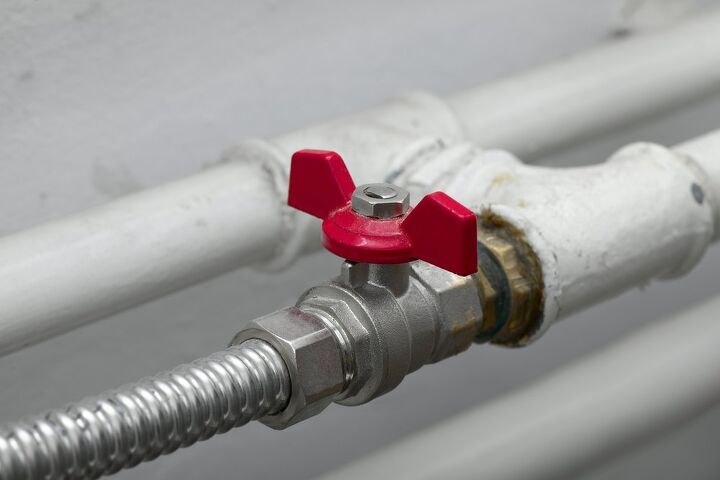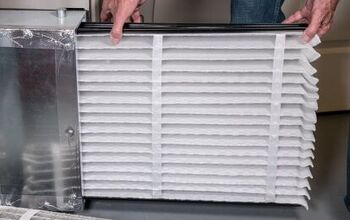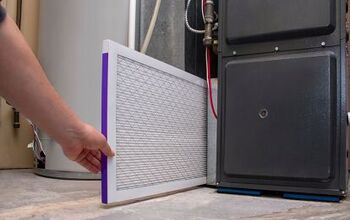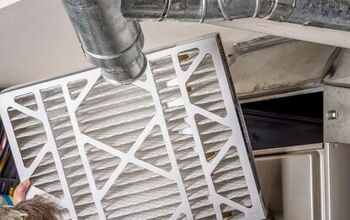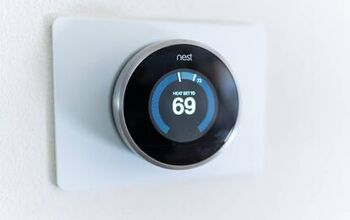Are Furnace Gas Valves Interchangeable? (Find Out Now!)

Many people love to do projects on their own before they contact a professional. Like projects dealing with electricity, if there is doubt, do not do it yourself. Call a professional if you have to change the furnace gas valve if you are unsure of something.
There are many types of valves that work for various purposes. Most valves deal with turning on and off water and gas through the pipes in which they flow. But the question arises, are furnace gas valves interchangeable?
Furnace gas valves are interchangeable if there are two wires seen on the valve. If two or more exist, it is advised to take a picture of the valve and pick up a replacement. If there is a problem you notice with the valve on the furnace, cut the gas off from the mainline.
Do You Need a Furnace Repair Contractor?
Get free, zero-commitment quotes from pro contractors near you.

What is a Furnace Gas Valve?
The furnace fuel system needs a gas valve to control the gas flow from the meter to the unit. Inside the furnace, the gas connections meet at the pilot light. If the valve is on, the pilot light will light up.
If the valve is turned off, then the pilot light will go out. The pilot light is the center of all the heating units. Pilot lights are on all gas-powered boilers or gas-fueled force air furnaces.
Other items with pilot lights, such as fireplaces and hot water tanks, all have valves to control the gas flow. Gas furnaces are simple devices, but if the furnace gas valve goes out, it needs replacement. There are ways to tell if the valve has worn out over time.
How to Check If a Furnace Gas Valve is Faulty?
The best way to tell if the furnace gas valve still works is through the pilot light. Turn the valve from the on position to the off position. There will be a single click you will hear when the valve is off.
Look for the pilot light to see if it is on or off. If the pilot light is off, then the valve is working correctly. However, if the pilot light is still on, gas is still flowing to the furnace, and the valve needs replacement.
A note to remember in safety is if you live around a noisy area, it may be difficult to hear the click. It is okay to put your ear closer to the valve. It would be best if you never stuck your entire head close to the pilot light area.
If there is any trace of a gas leak, do not get too close to the valve. Inhaling the fumes will knock you unconscious, or worse. Call for assistance immediately and shut the gas off at the meter if you can.
How Does a Furnace Gas Valve Work?
It takes two valves to make up one furnace gas valve, and they are placed in sequence, operating through electromagnets. The first valve, also called the safety valve, goes to the pilot light. The other valve is called the main valve, which allows the gas to burner trays.
A thermopile is the generator of power as it holds the safety valve open. It is also known as the thermocouple as it stays inside the flame of the pilot light. Without this heat, the gas valves are forced closed, cutting off the gas supply to the pilot light.
The thermocouple is the primary safety device that prevents the buildup of gas inside the home. The thermopile is also a 24 VAC transformer that powers the mainline and valve. The valve setups are all designed to detect problems and cut off the main furnace gas valve if something happens.
The valves are controlled by the thermostat, which tells the system it needs to kick on or off. The furnace gas valves will open when the heater kicks on and close when the heater turns off.
The Different Types of Furnace Gas Valves
There are different types of valves for other furnace gas systems. They are as follows:
1. Gas Chain
This valve requires the homeowner to physically turn the valve handle to open and close the gas flow to the furnace.
2. Solenoid Valve
When the furnace requires heat, the valves will open automatically according to the thermostat. All the other valves must be open for them to work.
If you are experiencing issues with your Honeywell thermostat, you may want to review our Honeywell Thermostat Is Blinking A Snowflake?
3. Pilot Safety
This valve will only remain open if the thermopile is heated to a temperature by the pilot light’s flame. There is a way to override the system manually if the pilot light goes out. Otherwise, it works through electromagnets automatically.
4. Combination Gas Valve
This valve was made famous in the 1960s and comes in one package to provide all the functions.
- Valve knob
- Regulator
- Thermocouple
- Electric terminals
- Solenoid valve
With the progression of technology, combination gas valves are no longer in regular use. It is replaced by the integrated furnace controls (IFC) or the electronic ignition controls.
How to Troubleshoot Furnace Gas Valves
If there are any issues where you notice that the valves are not functioning, there are a few troubleshoots to follow. Some signs may be the furnace is blowing cool air. Check the valves before checking something major like the furnace control board.
Step 1: Check the Pilot Light
Look to see where the pilot light is located and check to make sure it is on.
Step 2: Read the Owner’s Manual
Inside the owner’s manual are steps on how to relight the pilot light if it goes out.
Step 3: Relight the Pilot Light
Every furnace is different. Follow the manufacturer’s instructions and relight the pilot light according to the manual. Please note that it may take a moment for the main valve to remain open once the pilot light is lit.
Step 4: Check the Thermopile
Check for the correct voltage by checking the thermopile. There has to be enough voltage for the safety valve to remain open.
Step 5: Replacing the Thermopile
This step depends on if the safety valve stays open or not. If it does not remain open, then you will need to replace the thermopile.
Step 6: Check All Safety Devices
If you have reached this step, make sure all the safety devices in the circuit have enough voltage. The furnace gas valve will need to be replaced if nothing is working.
Cost to Change a Furnace Gas Valve
The average price to get the furnace gas valve replaced is $350 to $600. There are a few things that can determine the cost. The price for the part ranges from $70 to $400, depending on which valve is purchased.
You can interchange the valves only if there are two wires on the valve. If there are more than two, you will need a different type other than what is on the lines. This also affects the price of the parts required.
An HVAC company can charge different rates which are undetermined. It depends on the season and the area the job is located. The make and model is also another factor.
Do You Need a Furnace Repair Contractor?
Get free, zero-commitment quotes from pro contractors near you.

Steps to Change A Gas Furnace Valve
As mentioned, if you feel comfortable and 100 percent confident, you can change the furnace gas valve yourself. These are the steps to follow if you choose to do so.
Step 1: Gather the Proper Tools
Most of the tool kits have what is needed to perform this project. If you do not have one handy, you will need to borrow a tool kit or purchase one.
Step 2: Keep an Electrician’s Number Close By
To be on the safe side, keep the closest electrician’s number handy. Everything should go smooth but make sure you have this before starting.
Step 3: Turn off the Gas
This step should get done as soon as a problem is detected. If not, go to the main gas line and cut it off. Then cut off all other lines in the home. If there is any hint of a gas smell, open the doors and windows immediately.
Step 4: Remove the Valve
Use the tools and remove the valve.
Step 5: Replace the Valve
Using the same tools, put the new valve in its place.
Step 6: Turn the Gas Back On
Turn the gas back on and check to make sure everything works. If it does not, then call an HVAC repair company and shut the gas off till they get there.

We are a team of passionate homeowners, home improvement pros, and DIY enthusiasts who enjoy sharing home improvement, housekeeping, decorating, and more with other homeowners! Whether you're looking for a step-by-step guide on fixing an appliance or the cost of installing a fence, we've here to help.
More by Upgraded Home Team



